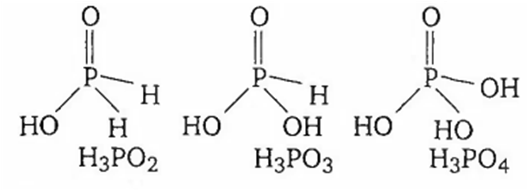 Multiple Choice Questions
Multiple Choice QuestionsWhat is the product formed when acetylene reacts with hypochlorous acid ?
CH3COCl
ClCH2CHO
Cl2CHCHO
ClCH2COOH
As the number of -OH groups increases in hypophosphorus acid, phosphorus acid and phosphoric acid, the acidic strength
increases
decreases
remains nearly same
remains appropriately same
C.
remains nearly same

Although the number of -OH groups is increasing in H3PO2 (1 OH group), H3PO3 (2 OH group) and H3PO4 (3 OH group), yet acidity does not increase much. This is due to the fact that the number of unprotonated oxygen, responsible for enhancement of acidity due to inductive effect, remains the same, as a result dissociation constant also remain nearly same.
The comparatively high b.pt. of HF is due to
high reactivity of fluorine
small size of hydrogen atom
formation of hydrogen bonds and consequent association
high IE of fluorine
Which of the following property does not correspond to the order HI < HBr < HCl < HF ?
Thermal stability
Reducing power
Ionic character
Dipole moment
Which of the following phosphorus oxyacids can act as a reducing agent?
H3PO3
H3PO4
H2P2O6
H4P2O7
Argon possesses
translational motion only
translational + rotational motion
translational + vibrational motion
translational + rotational + vibrational motion
Which among the following group 16 elements exists in more than two allotropic states?
Polonium
Tellurium
Selenium
Oxygen
